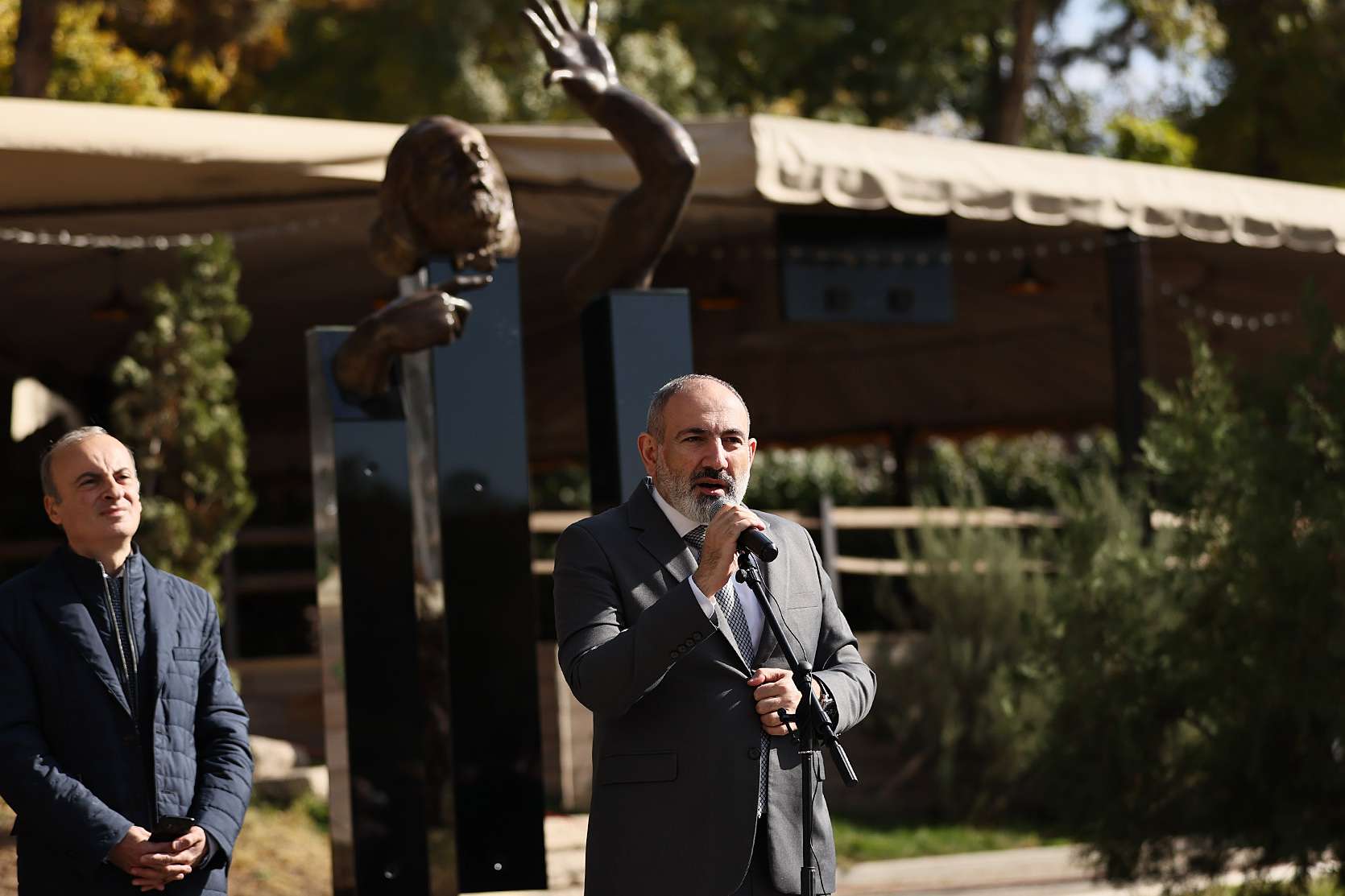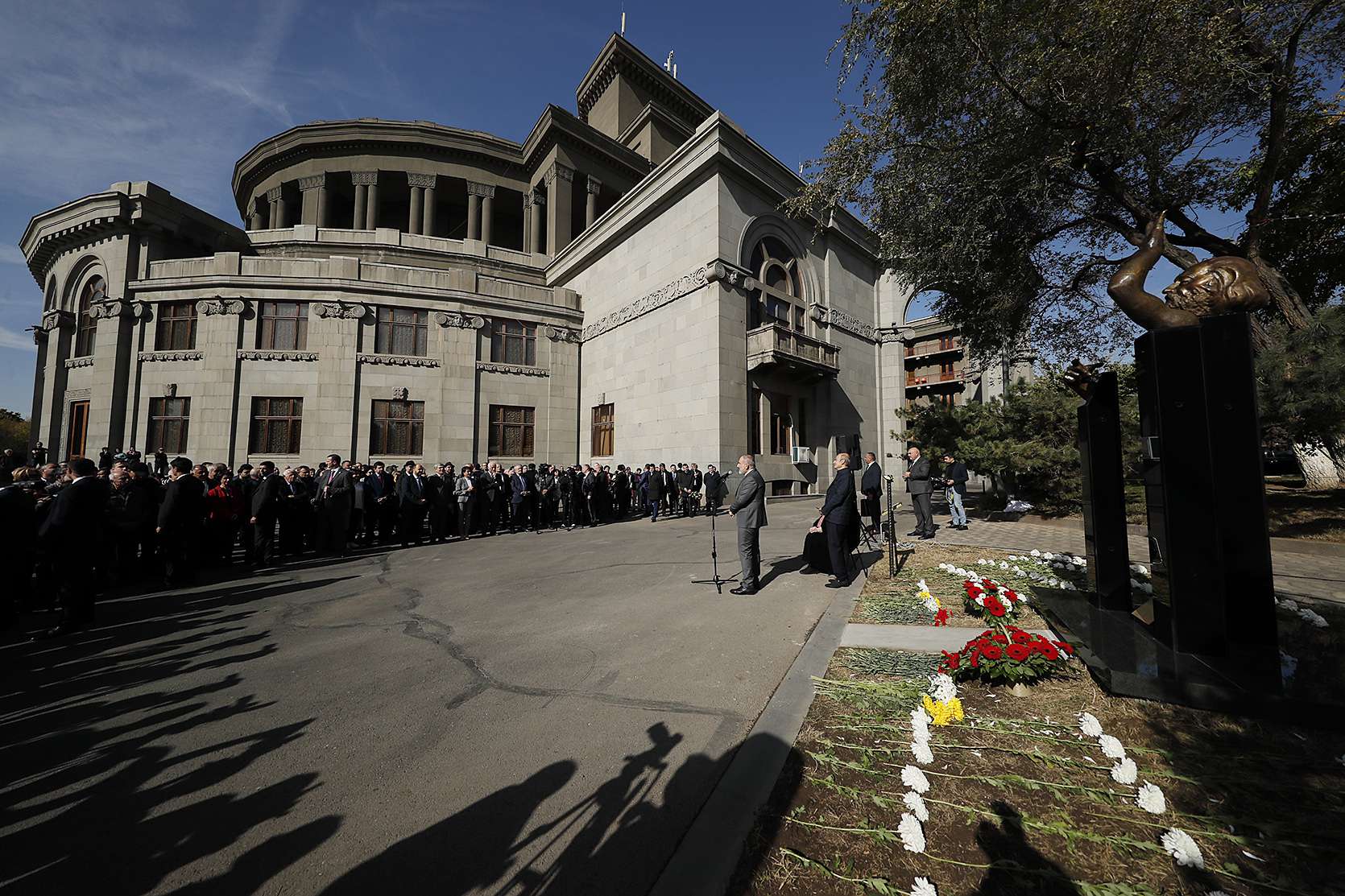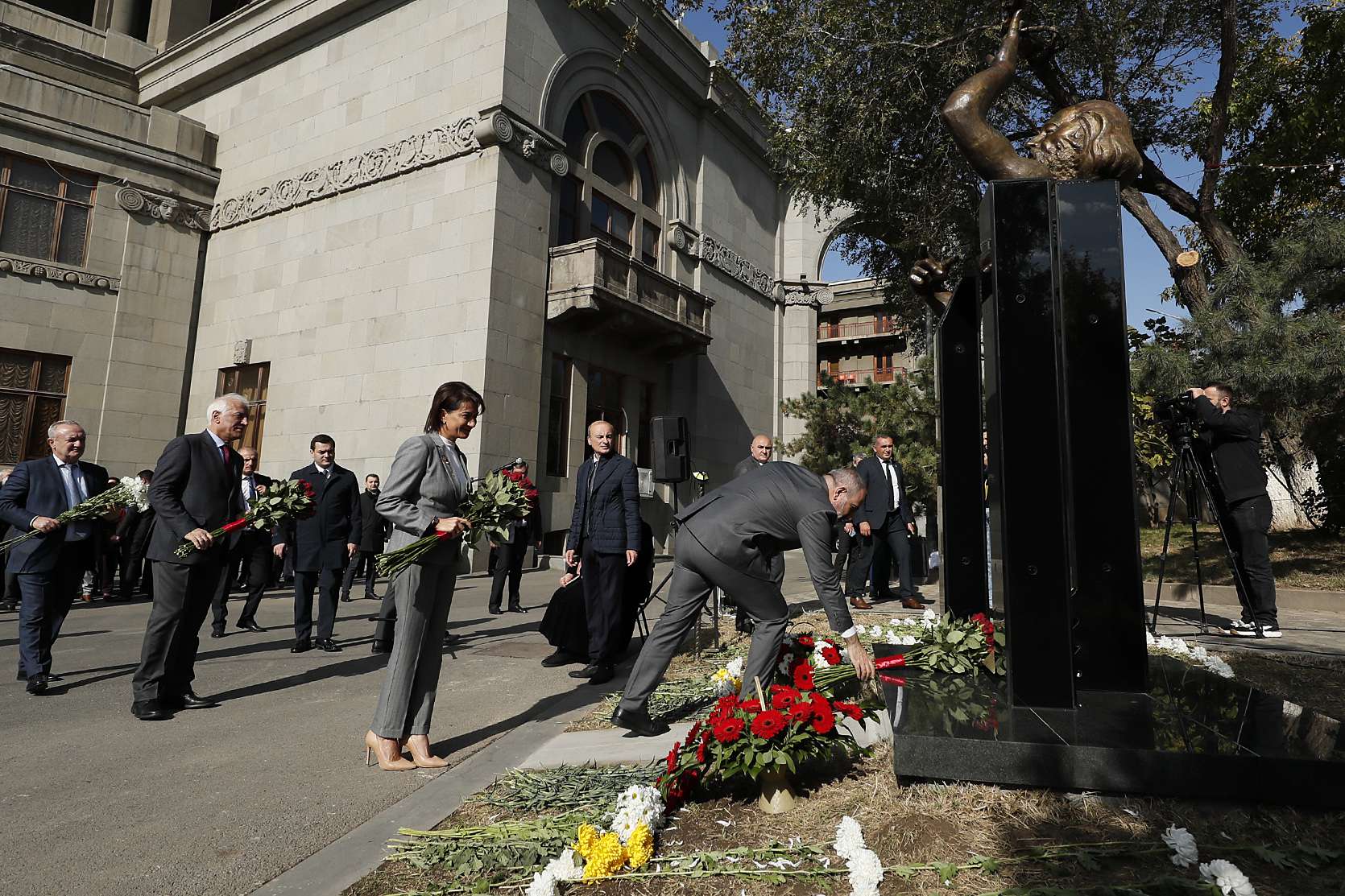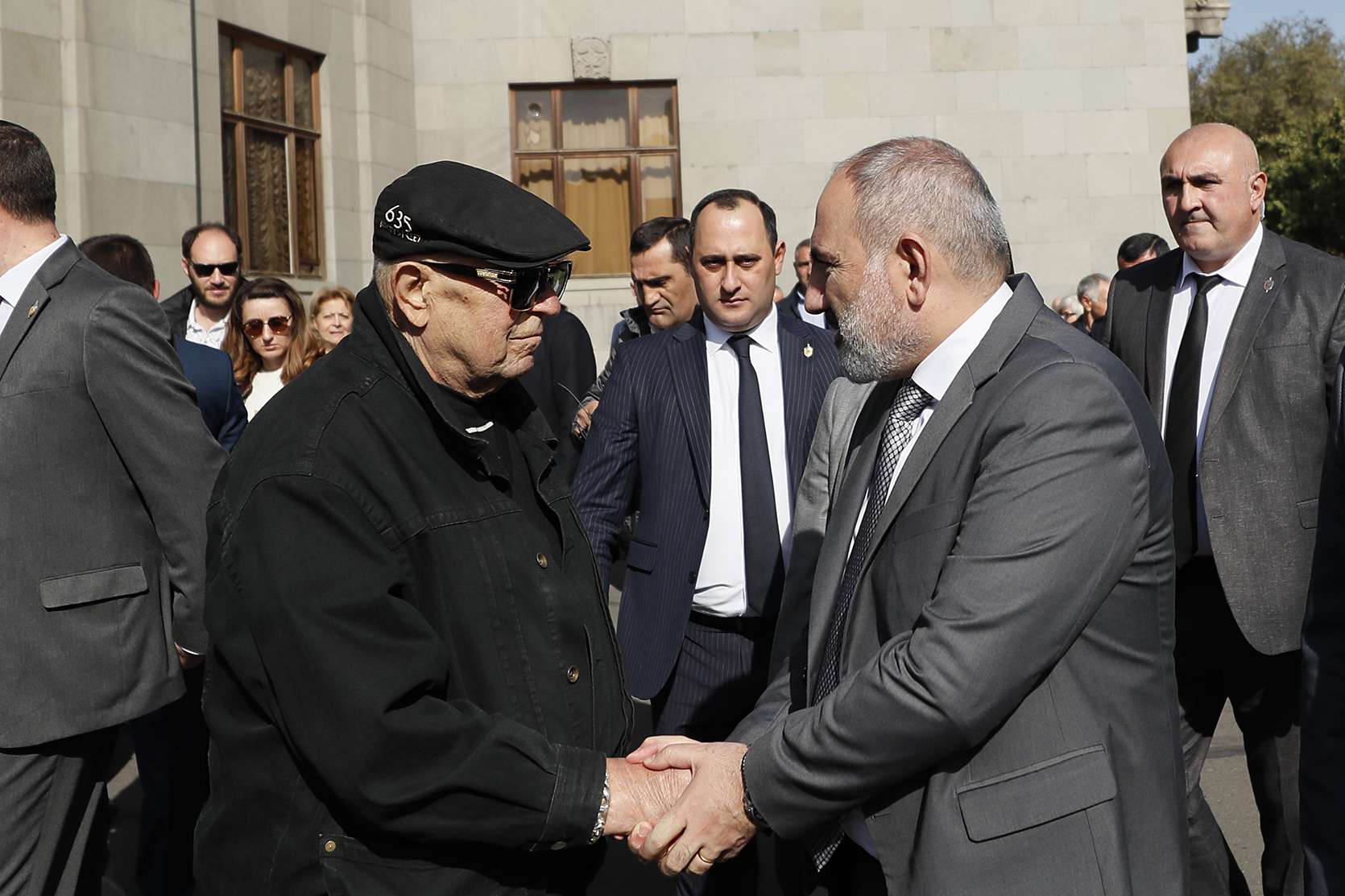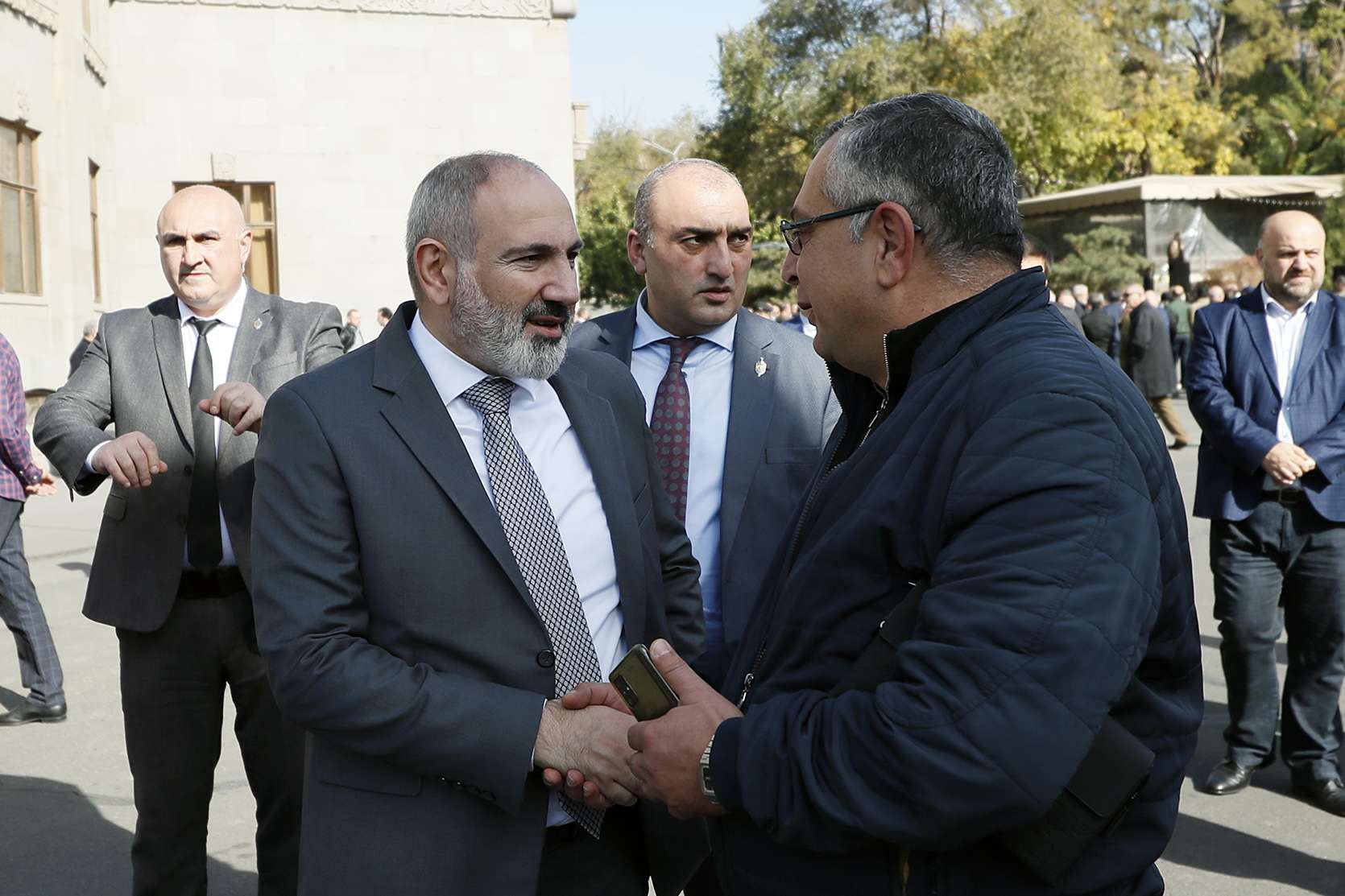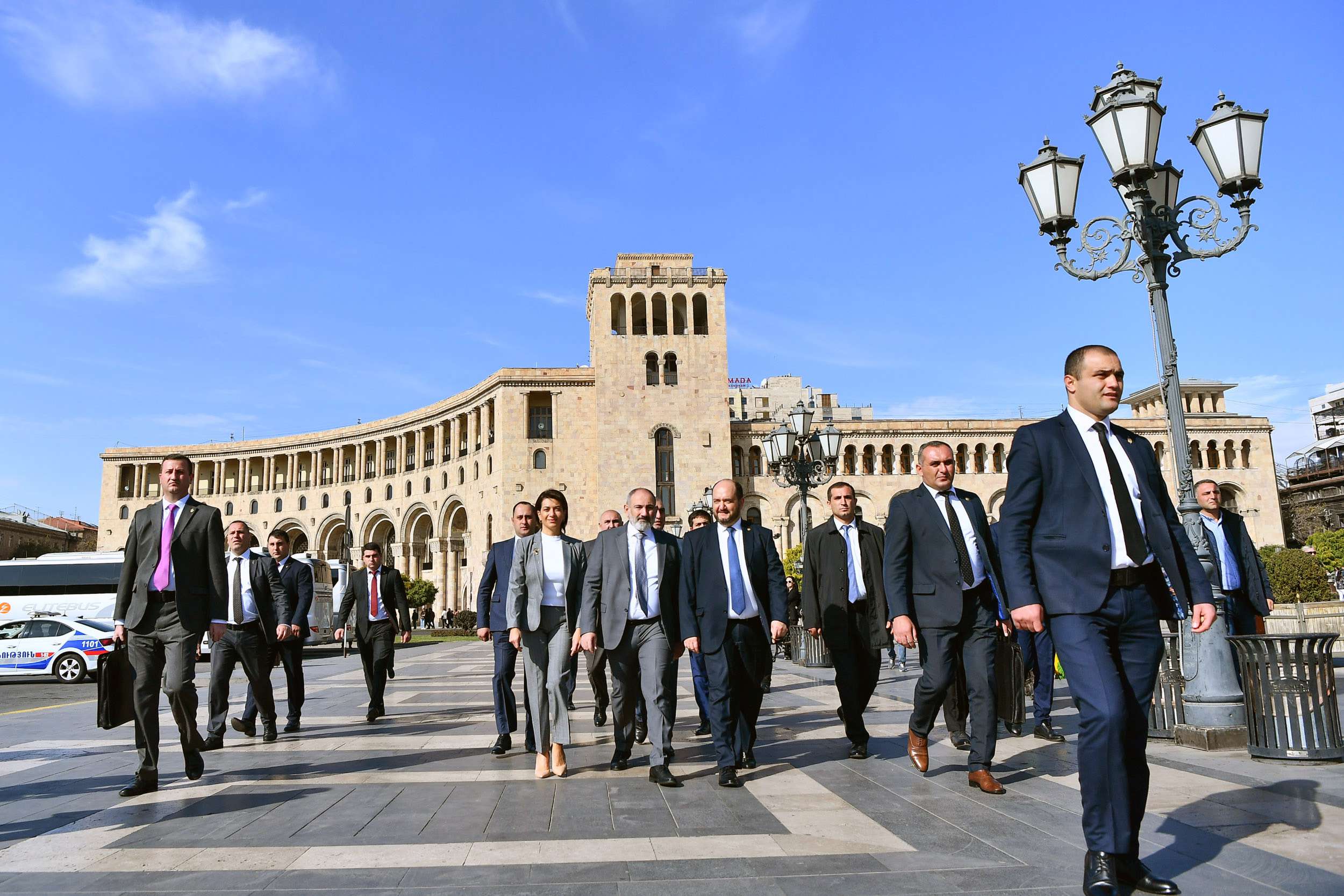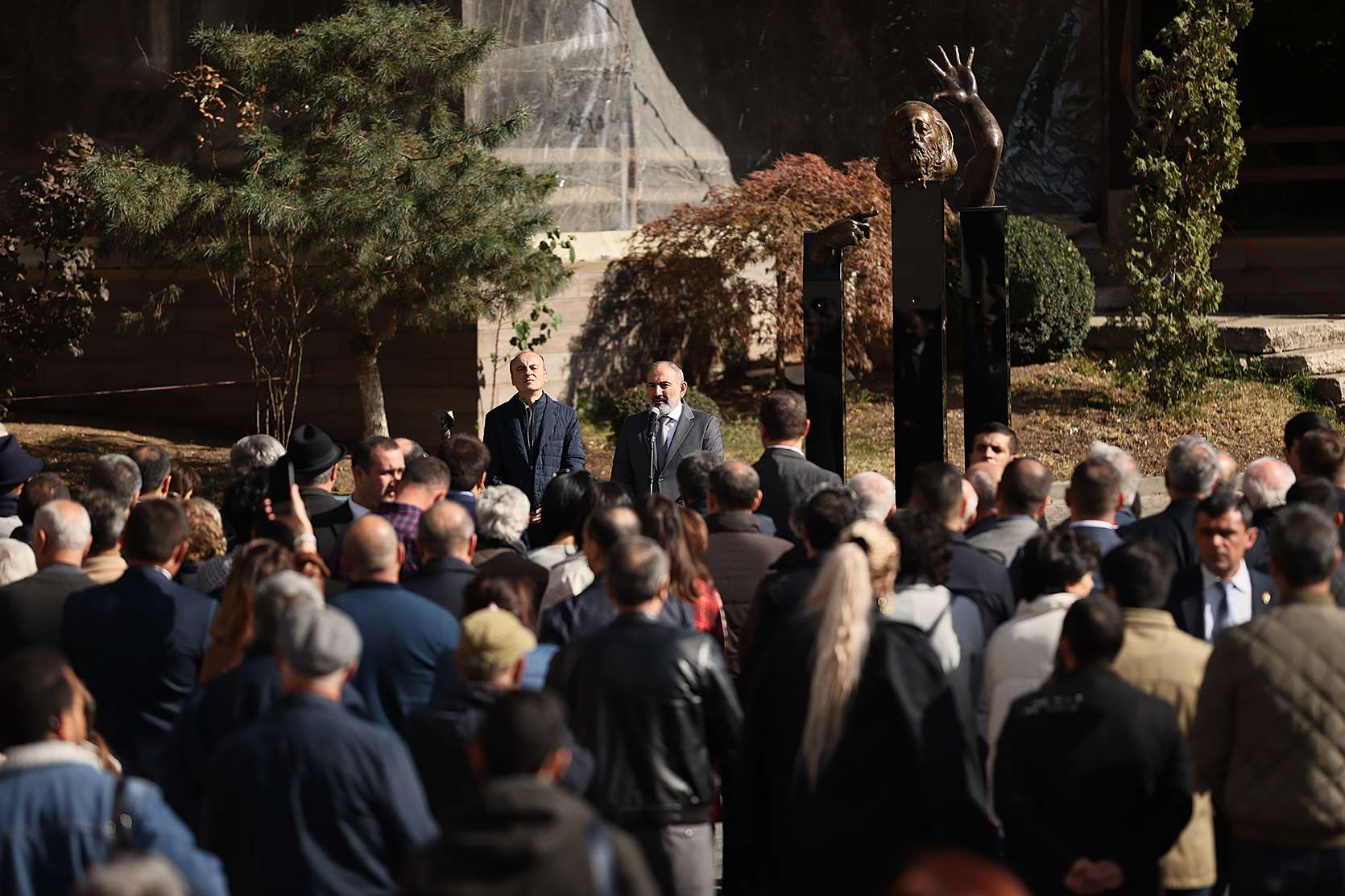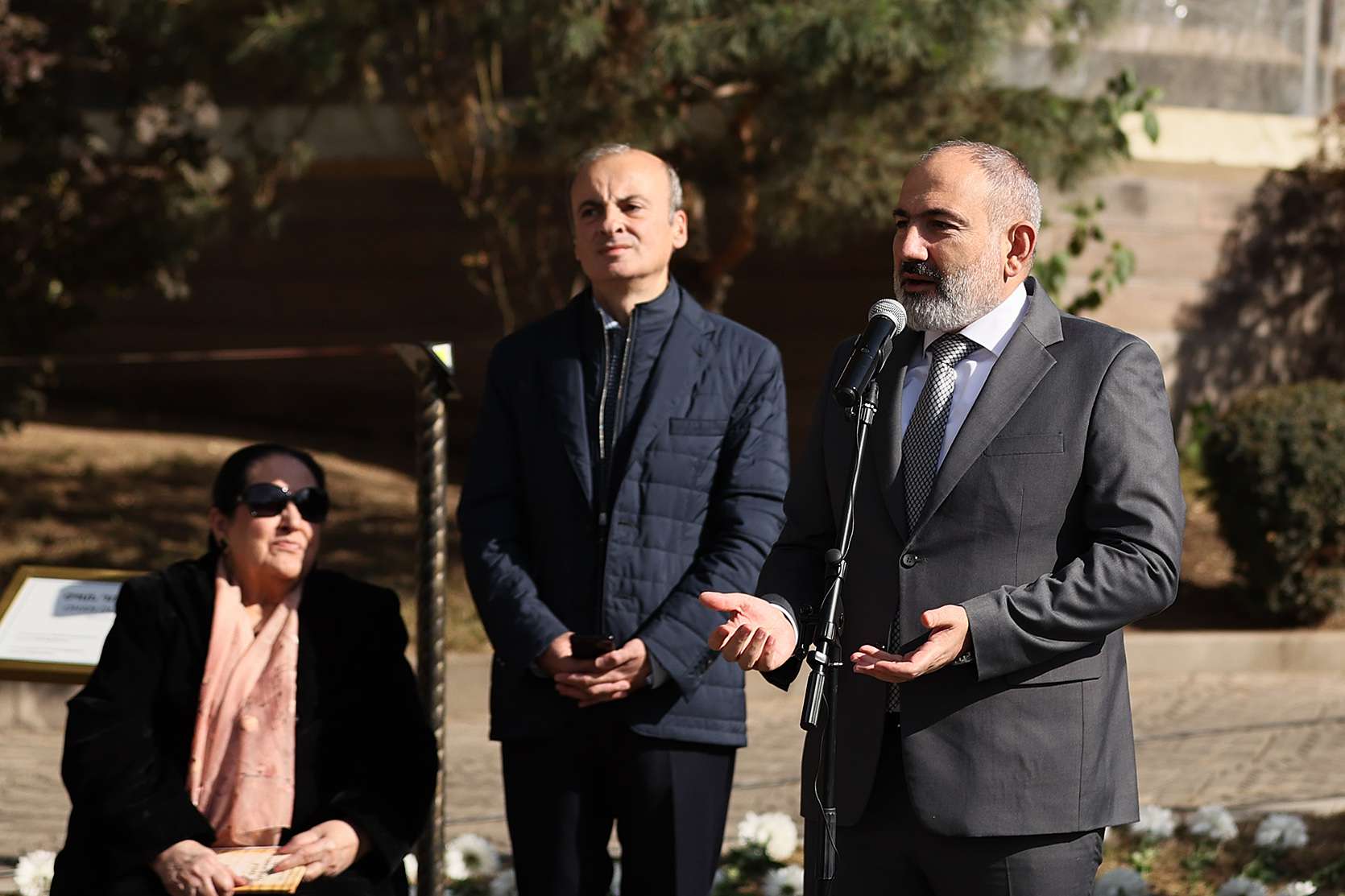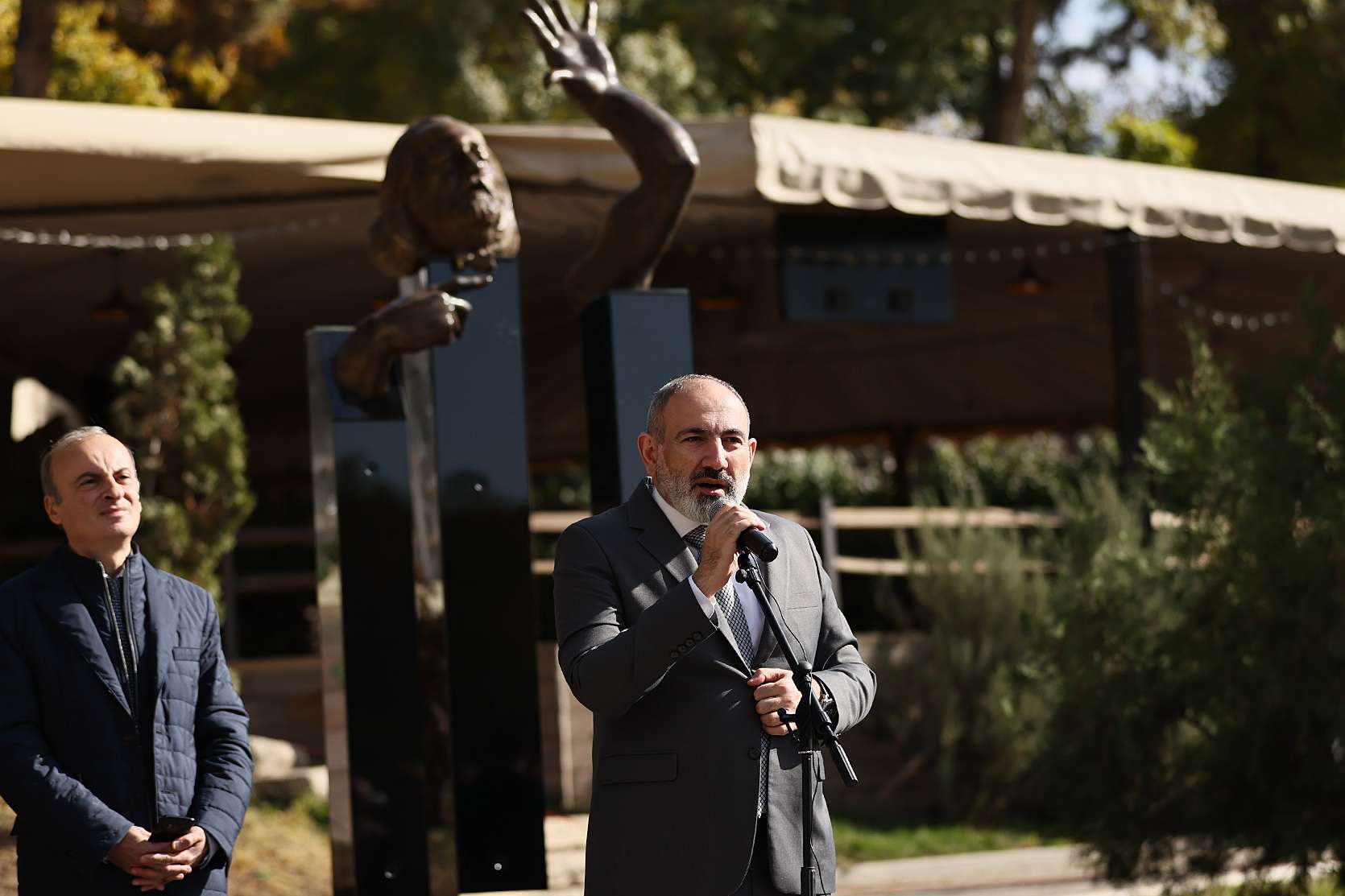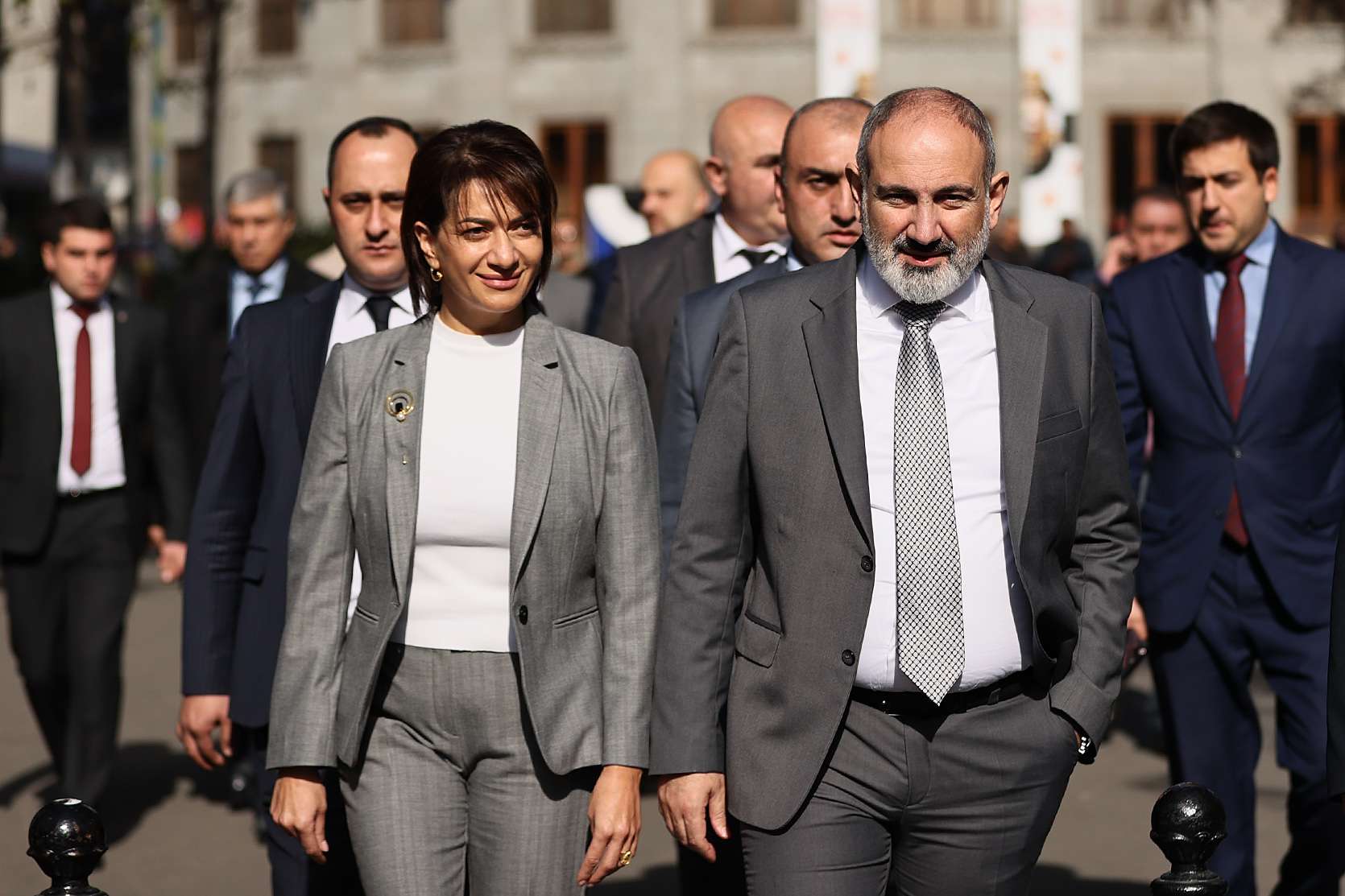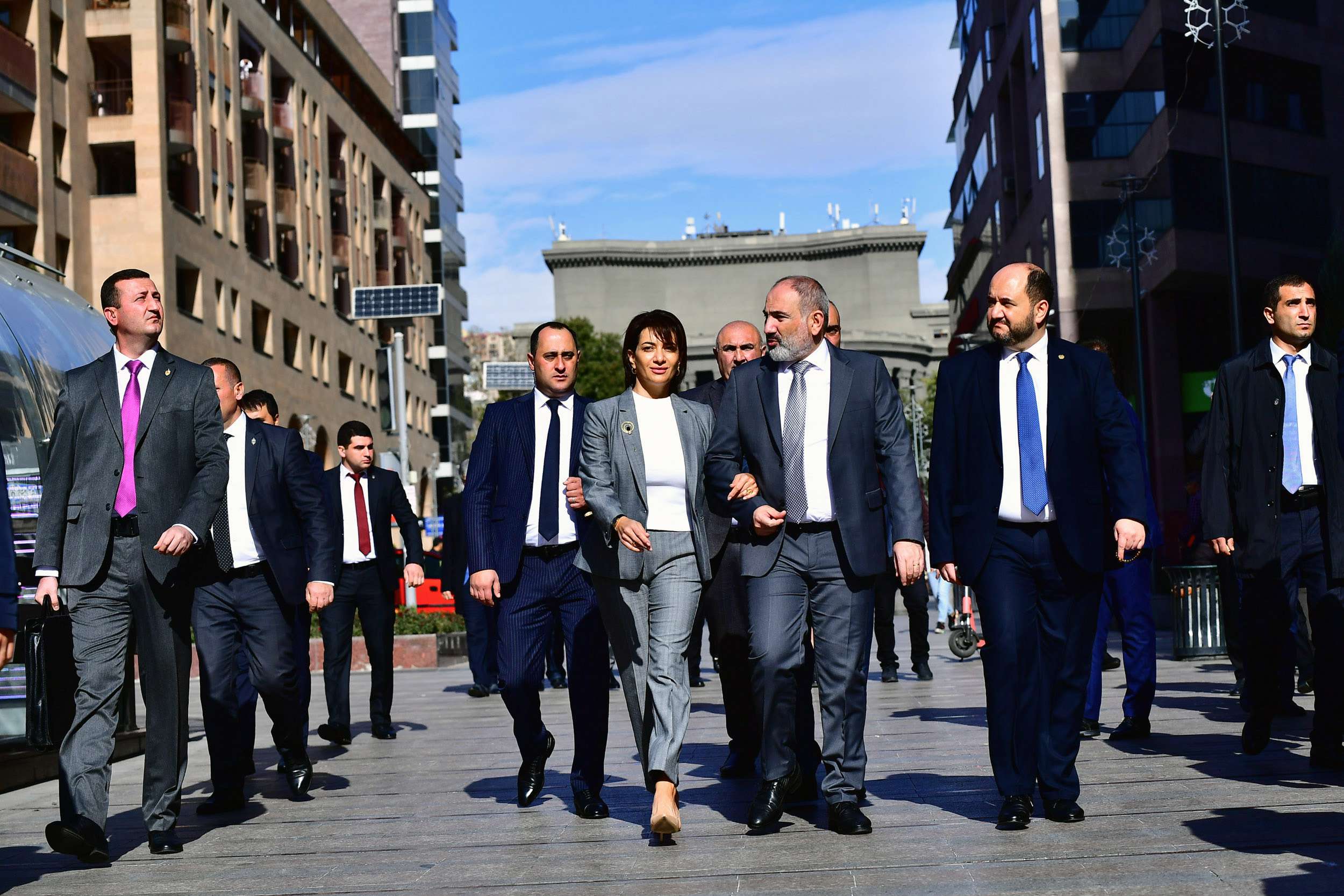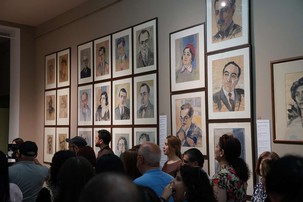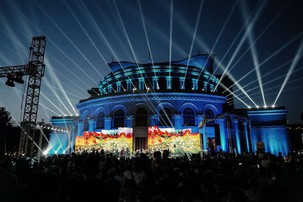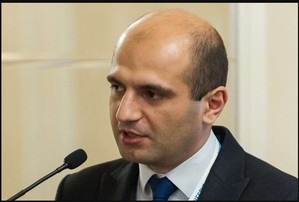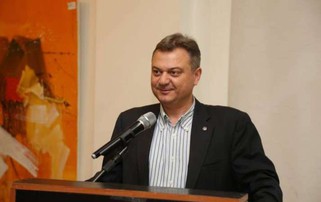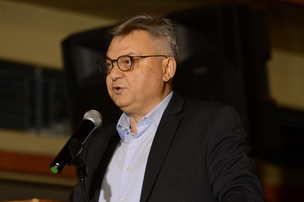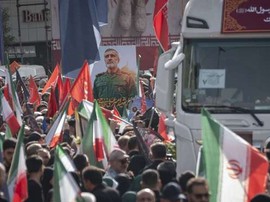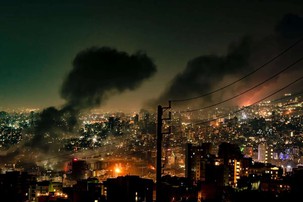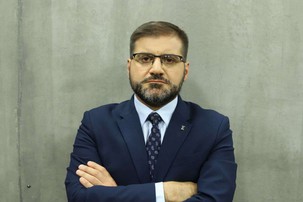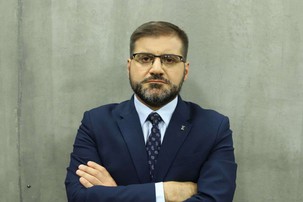Prime Minister Nikol Pashinyan and Mrs. Anna Hakobyan attended the opening ceremony of the statue-memorial of the famous conductor, and composer Ohan Duryan in Liberty Square, in the area adjacent to the Opera Theater named after Al Spendiaryan.
The event was attended by President Vahagn Khachaturyan, Head of the Prime Minister's Office Arayik Harutyunyan, Minister of Education, Science, Culture and Sports Vahram Dumanyan, Chairman of the Republic Party Aram Sargsyan, Ohan Duryan's wife Alice Duryan and son Narek Duryan.
The idea of the statue-memorial belongs to Vahan Vardapetyan; the statue's sculptor is Getik Baghdasaryan, the architect is Sahak Safaryan, and the author of the glass pedestal is Arsen Petrosyan. Samvel Ghumashyan carried out coordination works.
Prime Minister Pashinyan made a speech in which he stated:
"Honorable President of the Republic of Armenia,
Dear attendees,
It was a very happy occasion, and I had honor and joy. Still, perhaps it's also a shortcoming somewhere to communicate with maestro Ohan Duryan almost equally inside and outside these walls. It's a disadvantage because the right balance interacts more within these walls than outside this square. Now, what I saw and heard filled me with many positive charges because I have to be honest; I have to talk about two episodes.
The first time I heard the idea of placing a statue of Ohan Duryan in Freedom Square, to be honest, it was unexpected for me because, after all, Freedom Square, and how much will Ohan Duryan be involved in Freedom Square? I knew it was applied, but still, the statue is a different phenomenon. And when I understood the idea in more detail, I perceived that Ohan Duryan's presence in Freedom Square is significant because I think that Ohan Duryan's company in Freedom Square, or instead right here, symbolizes his presence inside the walls and outside the borders.
Ohan Duryan's presence here also symbolizes the presence of many of our political partners in this square: Aram Sargsyan's presence is emphasized, Vahagn Khachaturyan's presence is highlighted, and Vahram Dumanyan's presence is emphasized. I don't know many people may not be aware, but in 2007, together with Vahram Dumanyan, we held several political events in this square. It emphasizes my presence. I want to give only a few names because these are mixed times; I wonder if the name holder will perceive it positively, and who will say why my name is being speculated on Freedom Square? I remember holding my first rally in Freedom Square, where I gave a speech under that pillar. This is very important.
In the following circumstance, I told the president that a while ago, I have to thank you, Mr. Vardapetyan, because I also know what kind of personal connection you have with maestro Ohan Duryan. All this time, I was thinking about how much that emotional attachment could contradict and contrast with the aesthetics of Liberty Square and the National Academic Theater of Opera and Ballet. I was afraid that Ohan Duryan's circumstances and Mr. Vardapetyan's devotion to Ohan Duryan might spoil the aesthetics. Still, it turned out to be a magnificent place and composition, and I am grateful for that.
Secondly, I was told if I'd heard the commotion surrounding Ohan Duryan's statue. I said no, I hadn't heard it. They said a project for the figure had been published, and there was a lot of noise and criticism around it. We wanted to let you know I said it to me; you can send the photo. When I saw that photo, I was shocked, to be honest, because, for me, Ohan Duryan was just like this. Moreover, he did not look like this on stage. I remember - if I'm wrong, please correct me - there is a documentary film about Ohan Duryan; Stas Namin made that film, right? In that film, Ohan Duryan is in a short-sleeved shirt during the rehearsal. I was shocked by the work and the look of his arms, those muscular, impressive arms, because, sorry, Ohan Duryan in a tuxedo or tailcoat is not visible and fully understood. Ohan Duryan is incomprehensible but, at the same time, captivating the movement of those bare arms. If Ohan Duryan had another statue, consider that it is not Ohan Duryan's statue. I also congratulate the author of this idea; I thank the creator.
The character of Ohan Duryan was talked about, and I want to conclude with the following emphasis: he was born in Jerusalem, traveled all over the world, and rests in the homeland, but he lived in the motherland. Ohan Duryan, if I remember correctly, had massive, noisy, and successful tours in Armenia back in the 50s. His conducting activity in Armenia dates back to the end of the 50s and after his return to the already independent republic. Usually, they mean Jerusalem by pilgrimage, but I understand Ohan Duryan's life and journey. Pilgrimage from Jerusalem to a sovereign state, a sovereign homeland.
What we have to do is the continuation of that dream. A dream is also a living phenomenon, and I understand now that we have yet to notice the most concrete vision among inventions: that Armenia itself should be substantial, visible, measurable, and tangible, which is the guarantee and pledge of Armenia's existence. It's not easy because even we perceive our loved ones as ideal. The ideal is beyond concreteness because when you make a person concrete, you see his shortcomings and advantages. Sometimes you realize that he is not as handsome as you would like, sometimes, he is not as fleshy as you would like, and sometimes he is not even as strong as you would like, but this is when the culmination of love comes. When you love in concreteness, when you love as he is, you don't love the person of your dreams, but from the person of your dreams, you get a concrete person who has pains, flaws, and weaknesses, who is not so divine and cosmic, maybe that you have you dreamed or thought? But you, perceiving him as such, make him stronger and love him more. The same is true in the motherland. To love the homeland, concretizing, seeing all its advantages and disadvantages, taking it down from the pedestal and making it an object of daily concern: love, affection, criticism, harsh criticism, debate, argument, yes, family fight, and with this to protect it. I perceive today's symbol like this. Ohan Duryan was taken down from two pedestals, cultural and political, and was placed and rested on the soil of the Republic of Armenia. This is today's symbol, and I congratulate all of us on the occasion of this symbol."




